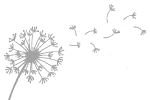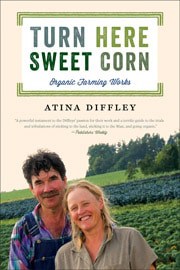Stepping Into The Perspective Of Another
During a recent interview, I was asked why I choose to write Turn Here Sweet Corn as a personal story. I explained that I wanted the reader to feel the characters’ experience. The intellect is involved with understanding the issues, but the heart needs to be engaged for behavior to change.
The interviewer then commented on my referral to myself as “the character.” I told her that during the writing process I would objectively separate myself from the character “Atina.” I would collect information about her and all the major characters in the book, what they cared about, what their favorite color was, what made them happy, and much more. I grew to know them intimately.
Most importantly I would ask what each of the characters wanted and needed.
It’s helpful not only for memoir writers to step without bias into the perspective of another, but also for farmers.
Meeting a Buyer’s Needs
As farmers, many of our management and marketing decisions were based on meeting the buyer’s needs; from cultivar selection and planting schedule, right down to pack-out and delivery time. Our goal was a satisfied buyer and a non-fungible relationship. We accomplished it by providing a steady stream of highest quality produce, from as early in the season as possible, and going non-stop until as late as possible.
Yes, we brought our needs to the table as well, everyone’s needs are important for a relationship to be healthy.
In The Field
Objectively stepping into the perspective of another can be applied to the growing process as well—think like the plant. What is it like to be a plant in the ground, or a seed? What does it feel like to push roots through compacted dirt, how about loose well-aggregated soil? Does the plant care if a field is roto-tilled versus prepped with a field digger? What’s for dinner down there? A nutritious whole food meal, or high calorie fast food?
We want healthy, high-yielding plants. By seeing to the plant’s needs we maximize it’s ability to meet ours.
We can practice the same thinking for pest control. What does a beneficial insect need to colonize a field? Food or pollen or nectar; what about nesting and water?
We want to also think like the pest insect, but with the opposite goal. In this case we strive to understand the pests’ wants and needs so that we can “stress the pest.”
Planting crops that host the same pest in the same area, year after year, meets the pests’ want for easy access to food. Rotating crops stresses the pest making it more difficult for it to find and colonize the crop.
There are many effective ways that understanding pest insects’ wants and needs can be applied. We know potato beetles will wake up voraciously hungry and need to eat before laying eggs. We met this need by providing “eggplant trap crops.” The beetles flocked to eat them, and could be quickly captured—before they laid their eggs—meeting our needs.
One female potato beetle can lay 500 eggs. Multiply 500, times two generations in one growing season—assuming half are female—if each female laid 500 eggs that could result in 125,500 potential beetles from one. In real field conditions, some eggs may be eaten by insect predators or could be affected by other factors such as weather. It’s easy to see how effective capturing a few beetles early in the growing season can be.
Relationships
Remember your partners too. Imagine if you woke up every morning and said to each other, “What do you need or want from me today!”
I’ve found that just being asked often meets my human need to be heard and cared for, and then, I don’t need anything more.
© Atina Diffley 2012

Read Atina Diffley's Blog: What Is A Farm?
Subscribe By Email. It’s Free
Enter your email address:
Worshops & Consulting
Visit Organic Farming Works LLC for Workshops and Coaching/Consulting with Atina and Martin Diffley.


